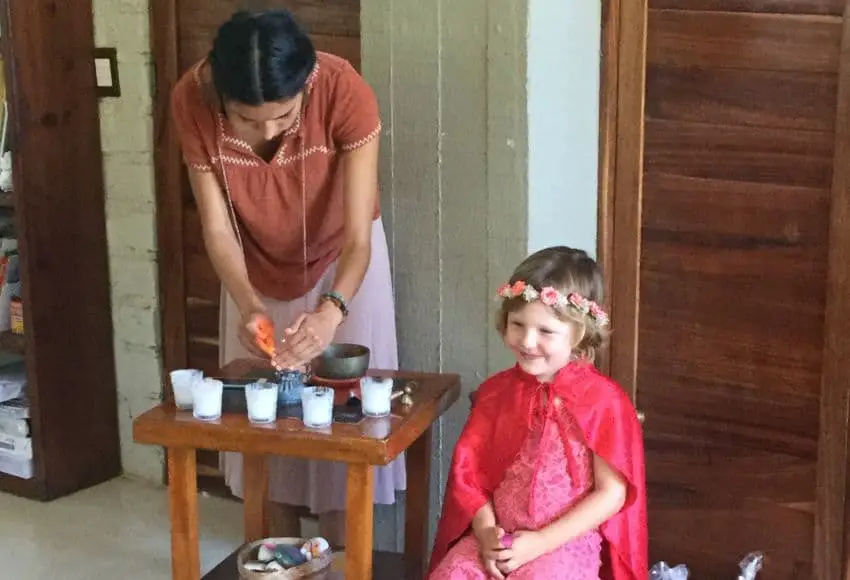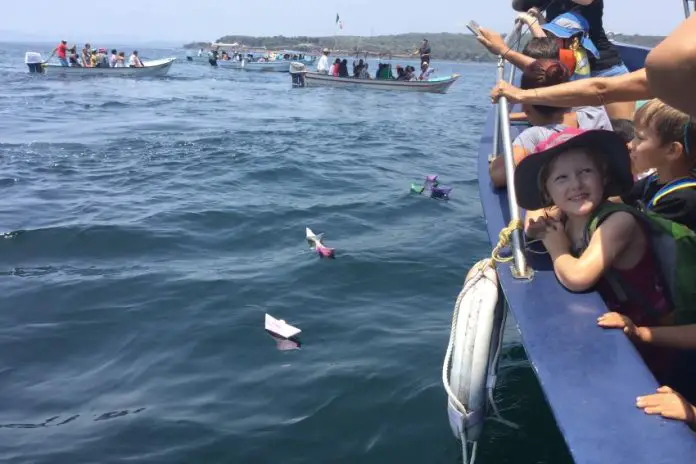Attracted to a slower pace of life and beautiful beaches, more foreign families are uprooting their kids, quitting their jobs, finding new ways to support themselves and moving to Mexico’s small coastal communities. Educating my child in Mexico is one of the best decisions I ever made.
Towns are responding and developing international and bilingual schools that cater to foreign children and accepting more foreign students into local public schools.

We are one of those families. In 2015, we left our jobs and home in the United States, moved to the small beachside community of Chacala, Nayarit, and enrolled our daughter in El Jardín y La Selva, a nonprofit community school. We had no idea when we dropped her off for her first day of preschool what a positive experience it would be.
As she is about to graduate from primary school, I’ve been reflecting on what she’s gained by attending a small school in coastal Mexico. I share these perspectives to help other families considering making a similar move.
Kids won’t “fall behind”; they’ll be light years ahead

One of the fears I had pulling my daughter out of the American school system and placing her in a small-town Mexican school was that she’d fall behind her peers in the U.S. True enough – when we returned to the States those first few summers, many of her friends were more advanced reading in English.
But I learned over time that the social and emotional skills she gained at El Jardín were far more important. Thanks to her time there, she’s more confident, creative and collaborative. Plus, now she reads and writes fluently in Spanish and English and is doing great in core subjects thanks to the school’s strong academic program.
Being plopped into a Mexican school without knowing the language or culture forced her to figure out how to advocate for herself, be more observant and experience what it’s like to be different. It humbled her as much as it frustrated her at times, but in the end, the experience made her more resilient and adaptable.
Small-town schools foster a culture of sharing
Like most beach towns in Mexico, in Chacala there are vast differences in the local population’s economic situation. Some families have lived here for generations, supporting themselves through fishing, domestic work and tourism. Others are relative newcomers from foreign countries and large cities in Mexico with greater wealth.
This means that both high and low-wealth students are part of the school community. While this is also true in many U.S. schools, because American neighborhoods are more economically homogeneous, the differences are starker in Mexico.
Our school has about a 4:1 ratio of low to high-wealth kids. So everything the school does needs to take this into account, from the way it fundraises and distributes scholarships, to how it plans school activities, fundraisers and excursions. Each child is given equitable access to the educational and extracurricular offerings according to their needs.
This fairmindedness extends to how the children treat each other. My daughter and her classmates come from all these backgrounds. They see the differences and disparities but instead of forming cliques, they have created a culture of sharing, not comparing. It amazes me to this day to see how generous they are with each other, regardless of their economic situation.
Celebration is an essential part of life

In addition to all the Mexican national holidays, coastal communities like Chacala have local celebrations, such as Mariner’s Day, Saint Raphael Week and arts and environmental festivals, in which students participate. Small community schools like El Jardín add other celebrations, such as Teacher’s Day, Family Day and International Children’s Day. The school year is longer to accommodate all the in-school celebrations and days off, but seeing your child experience so much joy, gratitude and community connections is so worth it.
Downtime is not “lost time”

Schools in small Mexican beach towns generally don’t have much going on in the way of after-school activities. The activities we do have are either at the school or within walking distance. Kids generally fill their time outside of school playing at each other’s houses, on the beach, at the local playground, on the plaza or relaxing at home.
There are times when I look at my friends’ social feeds and see everything that their kids are doing in the U.S. and feel like my daughter is missing out. But then I talk to these parents and they are exhausted from the frenzy of activities and their kids have zero downtime.
I’ve come to learn that there’s nothing wrong with downtime. It allows kids to connect with their friends and family, pursue a craft or hobby or — god forbid — spend time alone. Sometimes my daughter is bored. But I’d rather she be bored than oversubscribed.
Our experience has shown that there is nothing to fear and everything to gain by educating your child in a coastal community school like El Jardín.
El Jardín is one of many coastal schools dedicated to providing quality education to local children. Learn more about El Jardín and how you can support the project here.
Debbie Slobe is a writer and communications strategist based in Chacala, Nayarit. She blogs at Mexpatmama.com and is a senior program director at Resource Media. Find her on Instagram and Facebook.
